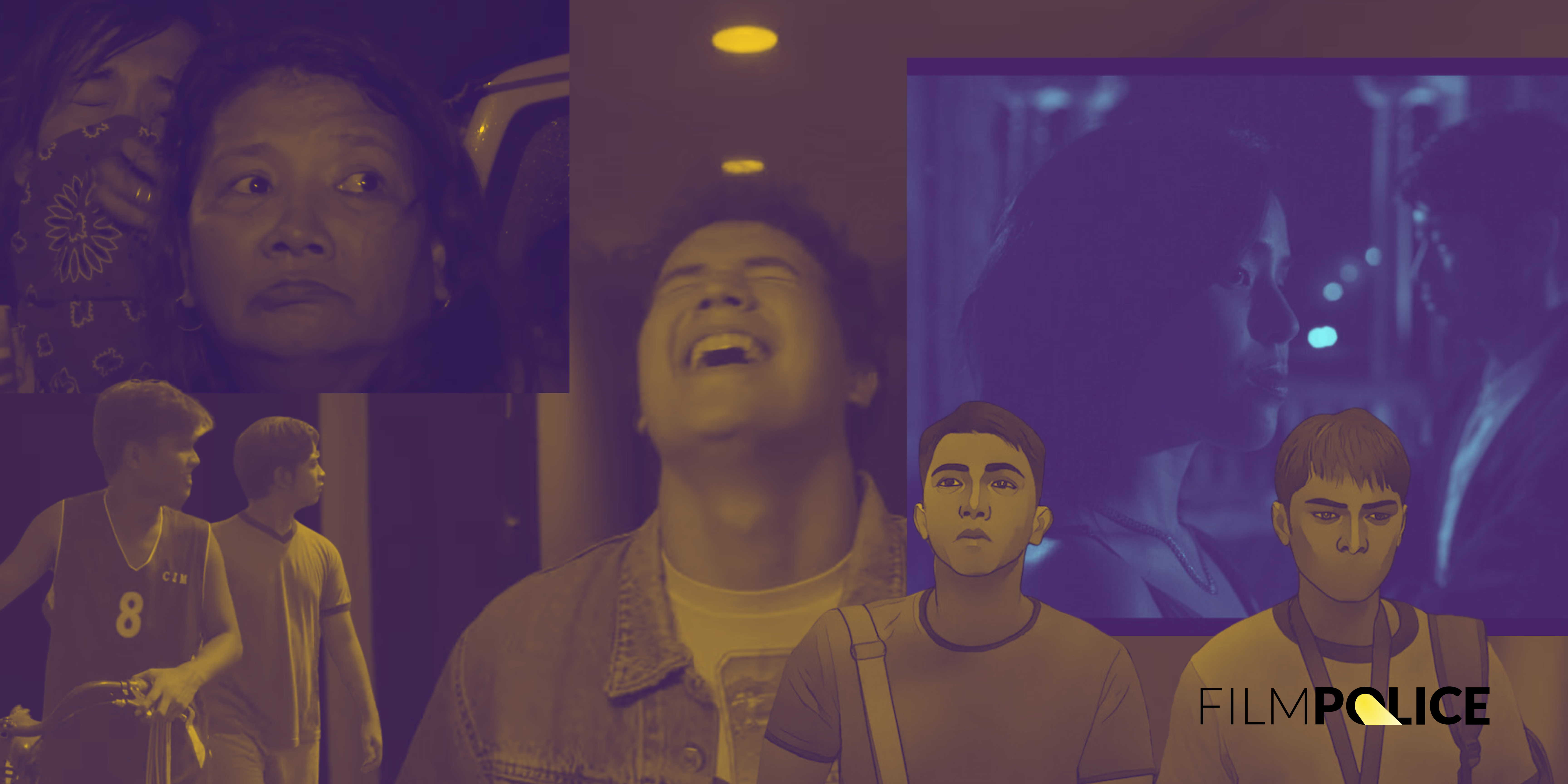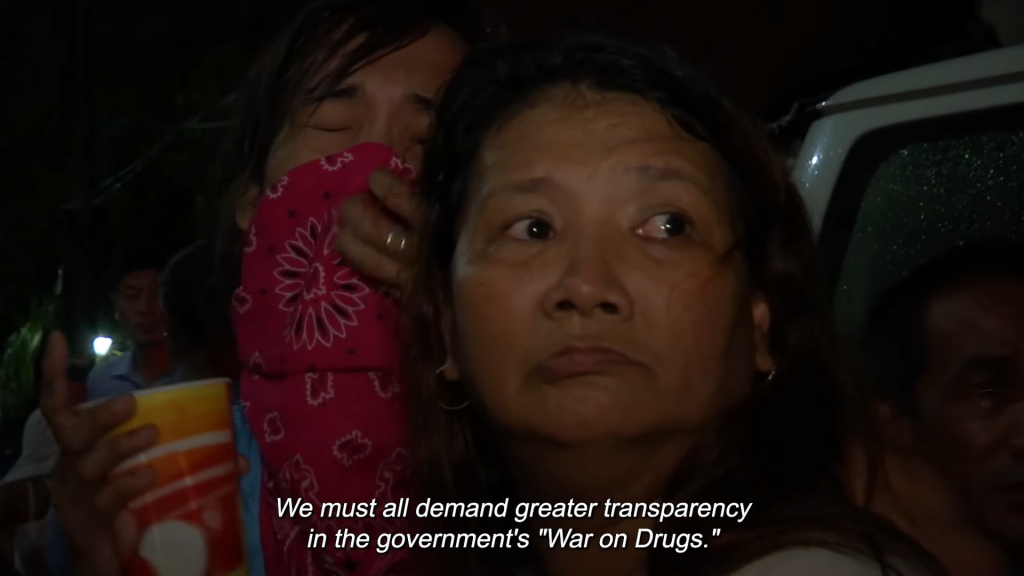Roy Narra reviews five of the ten Feature Films in this year’s Cinemalaya 2023. Read about ‘Huling Palabas’, ‘Iti Mapukpukaw’, ‘Gitling’, ‘Maria’ and ‘When This is All Over’.
Editor’s note: this year’s Cinemalaya Film Festival was held at a new venue. While the main venue (Cultural Center of the Philippines) had undergone into a slew of renovations, this year’s event was held at the prestigious Philippine International Convention Center. We have recorded an episode featuring our colleagues at the Society of Filipino Film Reviewers where we discuss the experience so stay tuned for that. Below are Roy Narra’s reviews of five out of ten feature films in this year’s Cinemalaya Independent Film Festival.
HULING PALABAS
As a probinsya boy, I rarely see myself in the characters in Filipino movies; they are mostly set in Metro Manila and the characters spend their time in offices, malls, fast-food restaurants, and other air-conditioned establishments. The urban area leaves no space for imagination, spectacle, or magic.
In Ryan Machado’s debut film Huling Palabas, Andoy (Shun Mark Gomez) feels every second of his adolescent life in Romblon during the 90’s. When he’s not looking for VHS tapes to rent at their local video store, Andoy searches for the answers to his questions: Where exactly is his father? Was he really captured by engkantos? Why did he have to endure the loud sex of his kind aunt and rude uncle every night? Is life going to be more exciting like in the movies?
Machado, who also wrote the screenplay, mixed the fascination and nostalgia for old Filipino films and Filipino folklore in creating the interesting aspects of Andoy’s life. The appearance of Ariel (Serena Magiliw) and Isidro (Cedric Juan) made Andoy’s banal provincial life more alluring and enchanting with their charm. Being with them felt like having the key to liberation and deeper self-search. With their stories and wise words, Andoy tries to piece together his developing identity as a best friend to Pido (Bon Andrew Lentejas), a promising honor student, a nephew to his guardians, and a boy who uses art, whether in sketches or films, in answering his own questions.
Huling Palabas rewards its patient viewers with a story unfolding to the satisfying resolution to Andoy’s frustrations and curiosity. It is also the needed coming-of-age story for the probinsyanos like me who are always absent on the big screen. Aside from the portrayal of life in Romblon, the usage of the Onhan language, dismantles the domination of Manila-centric stories on the big screen.
ITI MAPUKPUKAW (THE MISSING)
Iti Mapukpukaw (The Missing) is a reminder of the magic of cinema: It can disturb and comfort you about touchy subjects. The first animated film in Cinemalaya history and the eventual Best Film of this year’s festival is careful, gentle, and sensitive in tackling trauma and finding ways to resolve it.
In director Carl Joseph Papa’s most personal film yet, the protagonist Eric (Carlo Aquino) is a literal mouthless guy who works as an animator. When he finds out his uncle died, an alien from the past tries to kidnap him again.
The alien is really insistent on taking Eric to its mothership. It appears when he’s remembering his childhood days and when he’s making genuine connections, especially with his colleague and romantic interest Carlo (Gio Gahol). What made Iti Mapukpukaw a cathartic, powerful film about trauma and relationships is how Papa gives the voice and command to Eric as he tries to fight back the alien from kidnapping him. Even if Carlo and Eric’s mom (Dolly de Leon) are puzzled by his fight, they empower Eric with their unquestionable emotional support.
Papa used the medium of animation again in telling an emotional rollercoaster ride of a story, using Rotoscope as the visuals. Not only did this technique surpass the limitations of live-action visual storytelling, but it also made the film’s message and its meta approach more impactful and interesting, especially in its jaw-dropping, empowering, conclusion that made me teary-eyed while the credits were rolling.
GITLING
From its odes to Wong Kar-wai, Sofia Coppola, and even Jon Favreu’s Chef (2014), Jopy Arnaldo’s Gitling is a treat for film aficionados, especially for those who love to hurt themselves with stories of romantic tensions, time-constrained genuine connections, and comfortable yet painful silence.
Gitling puts Japanese filmmaker Makoto (Ken Yamamura) and his translator Jamie (Gabby Padilla) together in Bacolod for a film festival. In their slow-burn companionship, Makoto and Jamie create their own language, through crafting films or creating a literal new language, in dealing with their self-exploration in connection to their past.
There’s an invisible intimacy between Jamie and Makoto. When they’re alone on a balcony, in a restaurant, in a rest house in the mountain, and in a small space in Bacolod Ruins, they’re speaking their new language made up of love for Filipino food, fascination over heartbreaking films, and reminders of personal issues. When silence envelops Jamie and Makoto, the emotional tension is so loud, reminding me of Chow Mo-wan and Su Li-zhen in Wong Kar-Wai’s In The Mood For Love (which was mentioned in the film).
It feels intrusive to watch Makoto and Jamie spend their time together, especially knowing their time is limited but memorable. It’s their moment that they can selfishly claim without owing any explanation to other people, including the audience. That’s why the ending is an apt, bittersweet conclusion that left me broken yet satisfied.
Jamie recommended Makoto to include subtitles in the quiet scenes of his films for the audience to understand his intentions. As we continue to watch their companionship develop and blossom, maybe Jamie’s suggestion is not right. Maybe, in some crucial moments, subtitles are just distractions from fostering emotional resonance.
MARIA
It was exciting for Cinemalaya to finally include a documentary in their lineup, with She Andes’ Maria. As much as the intention was genuine and necessary especially when thousands of lives lost to the brutal drug war are still in search of justice, Maria kept the echo chamber of Duterte and Marcos critics intact by wasting its potential of widening our perspective of the Filipino women during these tumultuous times.
Maria featured the stories of three women and how they were beaten up and victimized by the drug war: Maria, Mary Ann, and Maria Leonor Robredo, more known as former Vice President Leni Robredo. Maria and Mary Ann lost their loved ones to the brutal police drug operations, while Leni struggled to get her policies enacted to counter Duterte’s inhumane political power. During Robredo’s part, the film became a late campaign ad for her unsuccessful presidential campaign against Bongbong Marcos.
With the superb editing of Benjamin Tolentino, Maria is emotionally striking when it does not censor the blood, dead bodies, and the wails and curses of the victims’ families. It is haunting to be reminded of how alleged small-time drug personalities were viciously killed by policemen without giving them due process or a chance to rehabilitate. The emotional gravity becomes heavier when Maria and Mary Ann narrate how their loved ones were killed, particularly the first Maria who found out her second son was found dead floating on the river. Tolentino edited in a way that still gave us a glimpse of hope that her son survived the war.
But again, what else is new in their story? Maria can actually bring a new perspective to the drug war, particularly with the story of the first Maria. The film unfortunately stopped her story when it got interesting. The documentary could have asked and unraveled her eventual political decisions. The abrupt conclusion to her story could also send a dangerous message, especially to the liberals, that Maria is an uneducated individual when in fact, just like other poor Filipino women, she is also grappling with the ropes she can find to merely survive.
WHEN THIS IS ALL OVER
Kevin Mayuga’s When This Is All Over effectively avoided the pitfalls of other Filipino youth-oriented films by not just limiting itself to ridiculing and satirizing privileged teenagers and making them naive characters who are only into sex, drugs, and partying. Set during the onset of the COVID-19 pandemic in Metro Manila, When This Is All Over’s core relies on the characters wanting to leap forward from the factors that glue them to their unfortunate stagnation: lockdown restrictions, class boundaries, and personal trauma that hinders genuine connection.
The unnamed protagonist who was only referred to as The Guy (juan karlos), a drug dealer, had to set up a secret party on a Makati condo roof deck in exchange for his client, whose parents are working in the US embassy, securing his US visa. He has been saving money from drug dealing to buy a ticket to the US and be with his mom (Ana Abad Santos) who is living with her new American husband and their baby. His heist-like plan involves violating COVID-19 protocols, using his clients’ privileges and connections, and betraying his new friend, the condo staff Rosemarie (Jorybell Agoto) who has the key to the roof deck.
Despite having a solid story and performances from the cast, When This is All Over, faltered when spoon-feeds its audience with its message on class gaps. The social commentary is already obvious with the satirization of the bratty, rich teenagers and the narration of the condo staff of their struggles during the pandemic. So when Aaron (Aaron Maniego) throws multiples of P1000s at Rosemarie or when Rosemarie points out that she and the Guy are not in the same situation, it only felt preachy. We’re not given a space to analyze these characters in these moments.
But what made When This is All Over a recommendable film is the award-winning cinematography by Martika Escobar. from its trippy drug scenes to the carefree and hypnotic rave scenes. What made The Guy’s heavy drug trip resonating, even if I never did drugs, was because it’s mostly on visuals: from the empty dance floors to The Guy crying under a table at a private club room. Escobar also perfectly captured The Guy’s mental struggles in dealing with the whiplash of events like the sudden lockdown and the fall of his connections to Rosemarie and his mother.
I was wondering why we never learned his real name. It’s probably because we’re also like The Guy. If we had the chance, we would also exploit the opportunities of getting out of this country. We might be also struggling to have an authentic connection without asking for something in return. We would also want to feel the never-ending bliss in raves.





